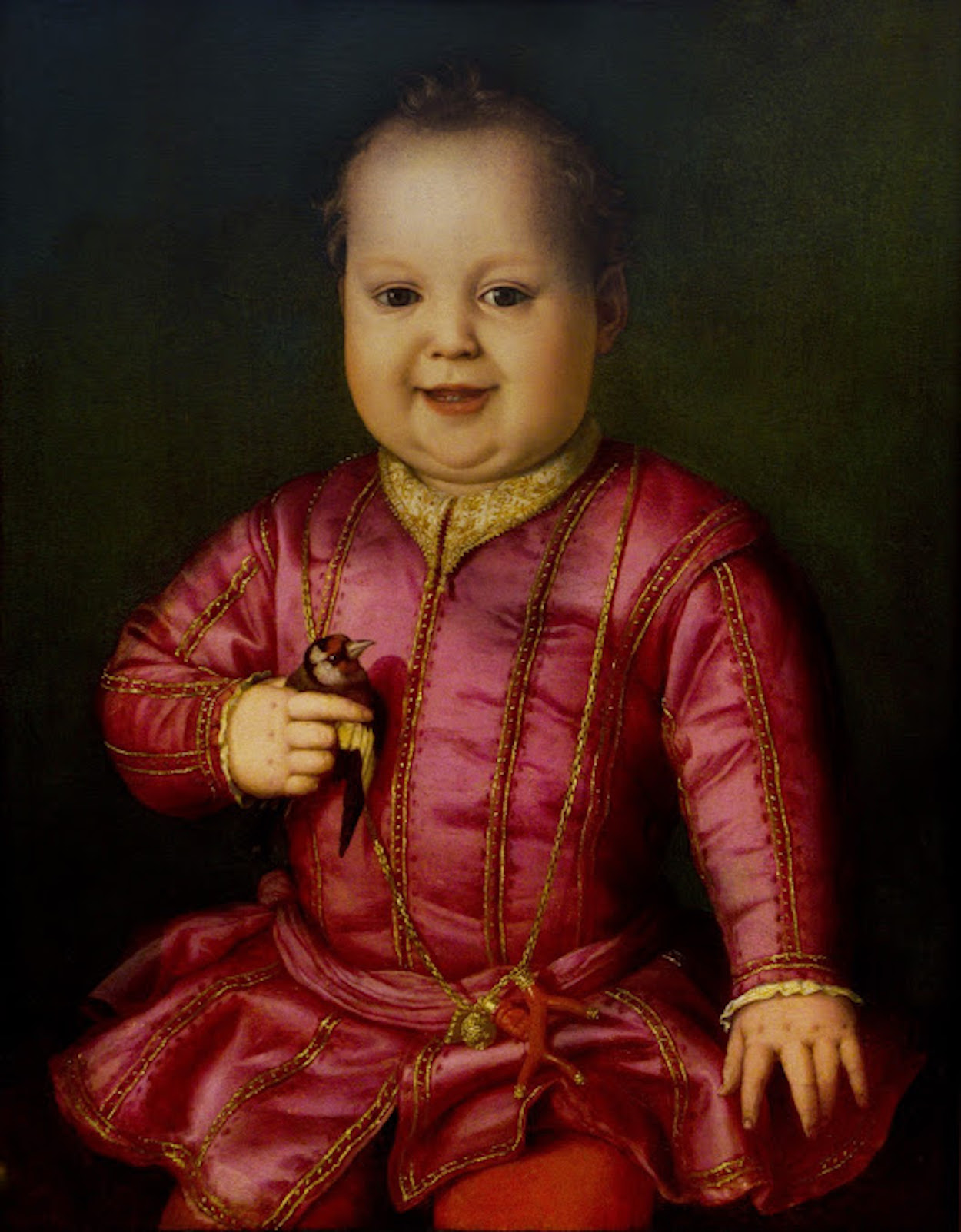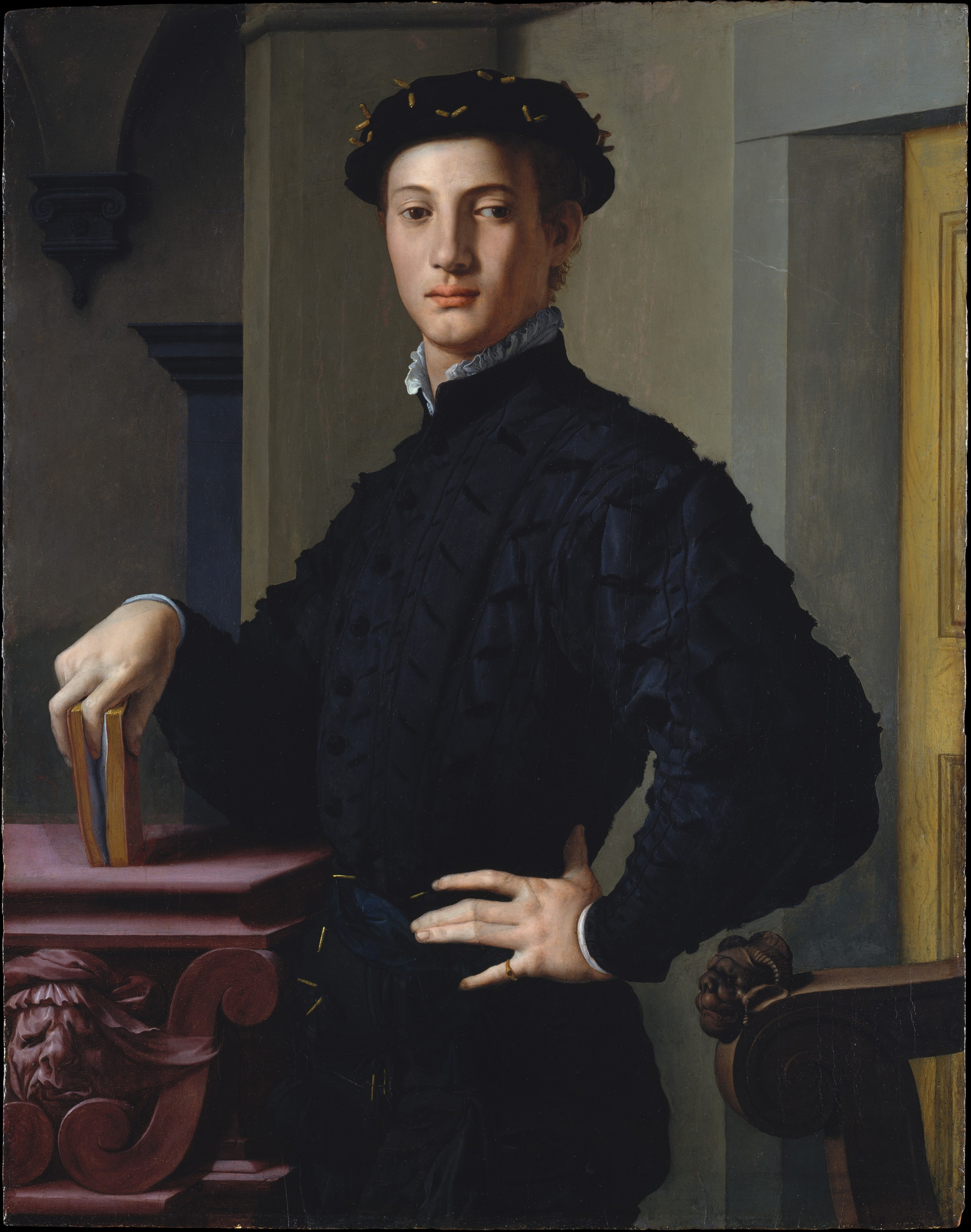This portrait of young Giovanni was painted for his father, Cosimo I de’ Medici, Grand Duke of Tuscany. Bronzino was the official painter of the Medici Court from 1532 and did many portraits of Duke Cosimo I and his family.
An extended title for this portrait is the Portrait of Giovanni de’ Medici as a Child holding a Goldfinch. It was painted sometime between 1544 and 1545, based on the child’s age. Giovanni was born in the September 1543 and this portrait depicts him at the age of eighteen months. He is wearing a pink doublet, which is painted with high detail. He holds a goldfinch in his hand, which is a Christian symbol, because the goldfinch eats thistle seed and so is associated with Christ’s Crown of Thorns and the Passion. It appears in religious paintings to represent the knowledge of the future Crucifixion. Around his neck, he wears a gold chain with a coral and other charms. It was believed that coral could protect children from harm.
Giovanni’s portrait is animated and engaging. It is a natural depiction of early childhood with his chubby face and fingers. Two of his baby teeth are peeping out, and he has tufts of fine hair that all add to his delightful representation. His active expression is that of a young child as he smiles and gazes out at the viewer. Giovanni was the fourth and youngest child of Cosimo, and was portrayed differently from his brothers because his father had different goals for his life. Years later, after Giovanni became a cardinal at the age of seventeen (that was a fast career), he had Bronzino paint an allegorical portrait titled Portrait of Giovanni de’ Medici as St. John the Baptist, which was painted between 1560 and 1562.
It was said a month after he was born, he was “beautiful and plump” and “like an angel from paradise” In 1547, he was described as “the handsomest and happiest boy that ever was…” which certainly fits the portrayal of his character in this charming portrait.
Dear users, we need your help to make DailyArt better and to create a new Android version - we need $20.000. Here is the link where you can find more information about our crowdfunding. Thank you <3


 Agnolo Bronzino
Agnolo Bronzino